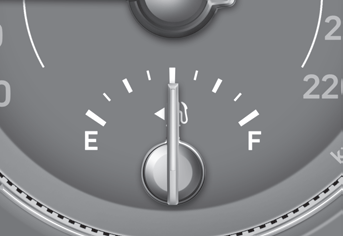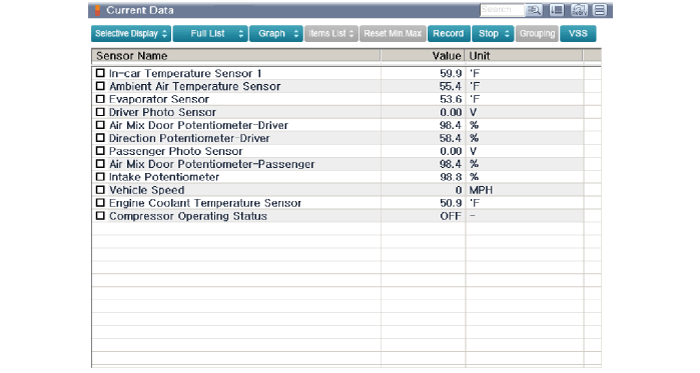Hyundai Venue: Heater / Mode Control Actuator. Repair procedures
Hyundai Venue (QX) (2020-2025) Service Manual / Heating, Ventilation and Air Conditioning / Heater / Mode Control Actuator. Repair procedures
| Inspection |
| 1. |
Turn the ignition switch OFF.
|
| 2. |
Disconnect the mode control actuator connector.
|
| 3. |
Verify that the mode control actuator operates to the defrost mode when
connecting 12V to terminal 3 and grounding terminal 4.
Verify that the mode control actuator operates to the vent mode when
connected in reverse.
|
| 4. |
Connect the mode control actuator connector.
|
| 5. |
Turn the ignition switch ON.
|
| 6. |
Check the voltage between terminal 6 and 5.
Specification
|
| 7. |
If the measured voltage is not within specification, check the operation
by replacing the existing mode control actuator with a new genuine part.
After that, determine whether replacement of the mode control actuator
is required or not.
|
| Diagnosis With GDS |
| 1. |
The heating, ventilation and air conditioning can be quickly diagnosed
failed parts with vehicle diagnostic system (GDS).
※ The diagnostic system (GDS) provides the following information.
(1) Self diagnosis : Checking the failure code (DTC) and display.
(2) Current data : Checking the system input/output data state.
(3) Actuation test : Checking the system operation condition.
(4) Additional function : Other controlling such as he system option
and zero point adjustment.
|
| 2. |
Select the 'Car model' and the system to be checked in order to check
the vehicle with the tester.
|
| 3. |
Select the 'Current data' menu to search the current state of the input/output
data.
The input/output data for the sensors corresponding to the Mode Control
Actuator can be checked.
|
| 4. |
To perform compulsory operation on Mode Control Actuator input factors,
select "ACTUATION TEST".
|
| Replacement |
| 1. |
Disconnect the negative (-) battery terminal.
|
| 2. |
Remove the main crash pad assembly.
(Refer to Body - "Main Crash Pad Assembly")
|
| 3. |
Separate the connector (A) and loosen the mounting screws and remove
the mode control actuator (B).
|
| 4. |
To install, reverse the removal procedure.
|
 Mode Control Actuator. Description and operation
Mode Control Actuator. Description and operation
Description
The mode control actuator is located at the heater unit.
It adjusts the position of the mode door by operating the mode control actuator
based on the signal of the A/C control unit...
 Blower
Blower
..
Other information:
Hyundai Venue (QX) (2020-2025) Service Manual: MDPS Assembly. Repair procedures
Replacement 1. Turn the steering wheel so that the front wheels are placed in the straight ahead position. • If the steering wheel and the front tires are not set straight ahead together, it may affect the number of circulation of steering wheel and damage the cable inside the clock spring...
Hyundai Venue (QX) (2020-2025) Service Manual: Shift Cable. Components and components location
..
Categories
- Manuals Home
- 1st Generation Venue Owners Manual
- 1st Generation Venue Service Manual
- Child-Protector Rear Door Locks
- Shift-lock system, Shift-lock release, Parking
- Theft-Alarm System
- New on site
- Most important about car
Fuel gauge

This gauge indicates the approximate amount of fuel remaining in the fuel tank.
Information
The fuel tank capacity is given in chapter 2. The fuel gauge is supplemented by a low fuel warning light, which will illuminate when the fuel tank is nearly empty. On inclines or curves, the fuel gauge pointer may fluctuate or the low fuel warning light may come on earlier than usual due to the movement of fuel in the tank.
Copyright © 2025 www.hvenueqx.com






